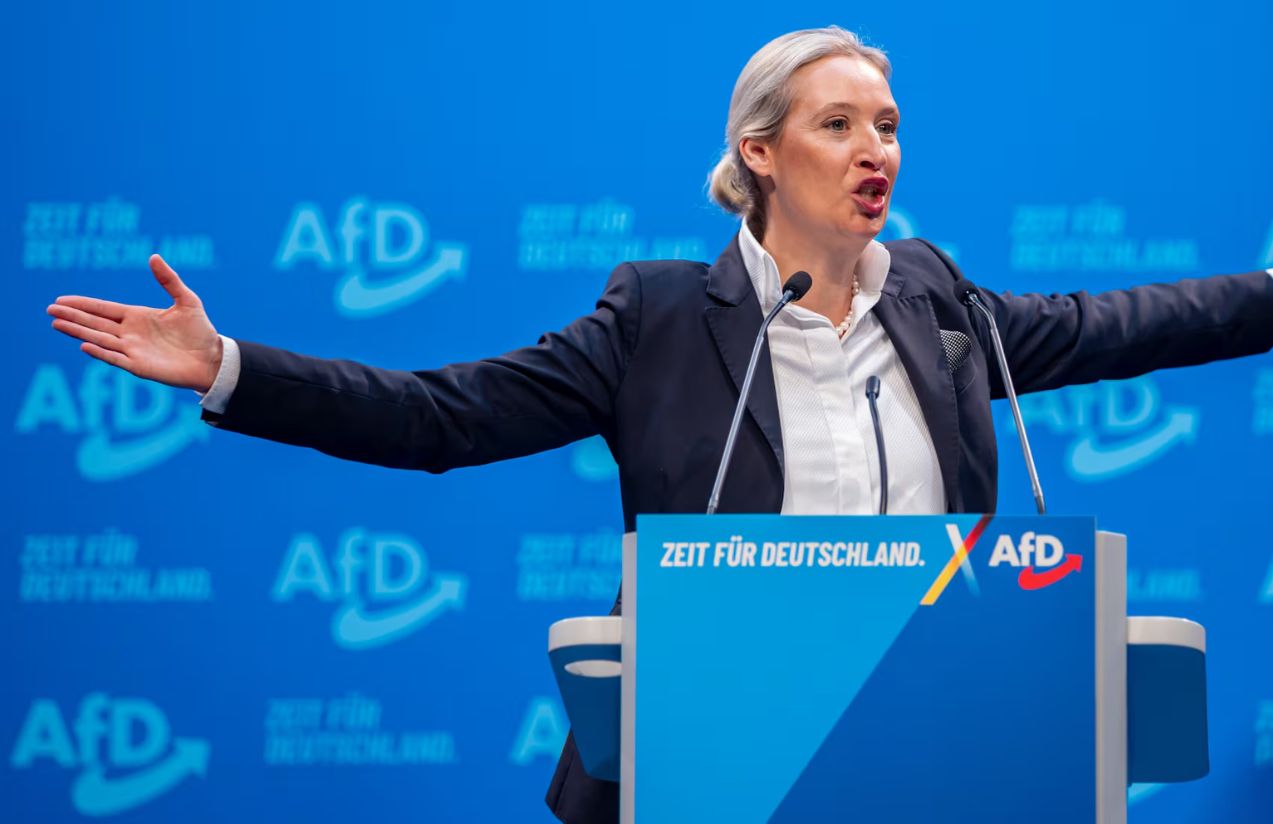This is one of the key takeaways from Sunday’s elections in the European country, which positioned the nationalist party Alternative for Germany (AfD) as the second-largest political force.
Germany’s own domestic intelligence service has labeled the party as “unconstitutional,” while its opponents describe it as “radical,” “racist,” and “anti-democratic.”
Friedrich Merz, the conservative leader who secured the most votes to become Germany’s next chancellor, has already ruled out forming a government with them.
However, AfD has emerged as a force shaking the foundations of both Germany and a Europe that is currently walking a tightrope in the global context, particularly after Donald Trump’s return to the White House.
The far-right gaining positions of power in Europe is not a new trend. In France, Marine Le Pen’s National Rally, in Italy, Giorgia Meloni’s Brothers of Italy, and in Spain, Santiago Abascal’s Vox, are all examples of this rise.
Despite differences, they all share a similar discourse: “anti-woke,” tough on immigration, and against the European Union (EU).
But Germany is a special case.
We are talking about Europe’s economic powerhouse and its very heart. Let’s not forget that, alongside France, it helped found and shape what we now know as the EU after World War II.
And this is where another unique aspect of Germany comes into play: the burden of its Nazi past.
For a long time, this shadow was believed to serve as a kind of guarantee or vaccine against the far-right.
However, neither its history, nor the attempts to isolate AfD, nor even the fact that Le Pen in Europe has moderated her rhetoric, have managed to halt the rise of AfD.
Why has Germany reached this point? BBC Mundo analyzes the possible causes.
1. The Economy
“The German miracle is over, and Europe will suffer the consequences.” This was the blunt assessment of Wolfgang Münchau, economist and author of the book “Kaput: The End of the German Economic Miracle,” in an interview with BBC Mundo.
Because what was once the “European locomotive” has stalled in recent years.
Reviving the economy was one of the central themes of the electoral campaign, of course.
The decline in Gross Domestic Product (GDP) and the rise in inflation are just some of the symptoms of Germany’s economic crisis.
Several factors contribute to this. One of them is that Germany’s growth was heavily dependent on cheap Russian gas, a supply that was cut off following Russia’s invasion of Ukraine.
Other factors include an over-reliance on the automotive industry, dependence on exports, and insufficient investment in technological and digital infrastructure.
“Germany became highly dependent on automobiles, chemicals, and mechanical engineering; it did not take the lead in electric vehicles, and the digitalization of industries has been slow. Germany failed to adapt,” says Münchau.
Meanwhile, China has advanced rapidly in the automotive industry and dominates electric vehicle technology, reducing the demand for German imports.
Additionally, Russia’s full-scale invasion of Ukraine left Germany in desperate need of alternative energy sources. Purchasing liquefied natural gas (LNG) from the United States and other countries is costly, creating financial strain for many energy-intensive German companies.
The result? Germany’s economy is sluggish and rigid. And since it is the largest member of the eurozone, its problems have ripple effects both inside and outside its borders.
2. Migration
More than the economy or Germany’s involvement in the Ukraine war, immigration has been the main topic of these elections and a key factor in AfD’s success.
The debate on reducing migration and deporting undocumented people has dominated the political and social discourse.
But for the far-right, it comes with nuances.
They speak of “re-migration,” a term advocating the return of migrants to their home countries—even those who already hold German citizenship.
With its nationalist and anti-immigration stance, AfD, led by Alice Weidel, has surged to nearly 20% in the polls.
Germany is not the only European country currently grappling with immigration concerns, but it has single-handedly taken in over one million asylum seekers, mainly from Syria and Afghanistan, during the 2015/2016 European migrant crisis.
In response to the Ukraine crisis, it welcomed 1.2 million Ukrainian refugees.
In past decades, Germany embraced “multikulti” (multiculturalism) and took pride in what it called its “welcoming culture”, celebrating its diversity.
But now, a growing movement is pushing back against that idea.
AfD insists it is neither racist nor anti-immigration and claims that anyone is welcome in Germany if they arrive legally, find work, contribute to society, and respect local norms and culture.
In reality, immigration is essential for an economy like Germany’s.
A recent analysis by the Federal Employment Agency concluded that without migrants, Germany would have faced a net loss of 209,000 jobs between September 2023 and September 2024.
However, many Germans—particularly AfD voters—see a different picture, especially in recent months.
A series of attacks by asylum seekers from the Middle East and Afghanistan has revived fears about border security.
The party pledges to immediately deport all immigrants who commit crimes and anyone who enters illegally.
3. Young Voters and Social Media Influence
A global trend is also evident in Germany: the growing support for far-right parties among young men.
This is where AfD has built a strong electoral base.
A 2024 Pew Research Center study found that 26% of German men viewed AfD favorably, compared to 11% of women, with male support rising by 10 percentage points since 2022.
Sunday’s election results confirmed this trend: 21% of young voters aged 18-24 supported the far-right party.
Moreover, social media has played a crucial role in AfD’s rise—just as it has for other far-right parties in Europe, such as Vox in Spain. These platforms allow AfD to bypass traditional media, which they often view as hostile.

